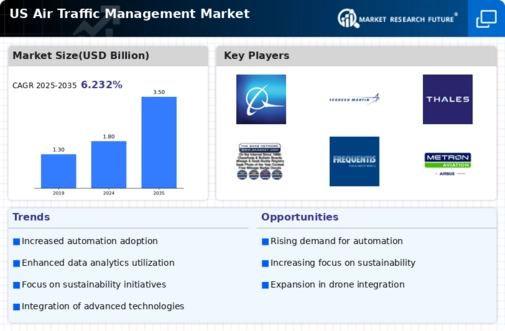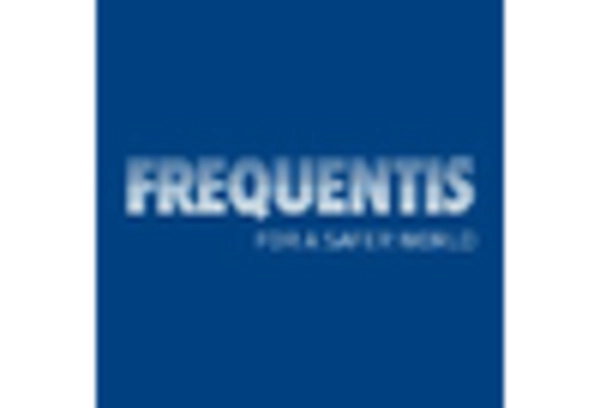Public-Private Partnerships
The air traffic-management market is increasingly benefiting from public-private partnerships (PPPs), which are fostering innovation and investment in air traffic control systems. These collaborations between government entities and private companies are essential for developing and implementing advanced technologies that enhance air traffic management. By pooling resources and expertise, stakeholders can address the challenges posed by growing air traffic and aging infrastructure. The FAA has recognized the importance of PPPs in advancing the air traffic-management market, encouraging initiatives that leverage private sector innovation. Such partnerships are likely to accelerate the deployment of next-generation systems, ultimately leading to improved safety, efficiency, and capacity in the airspace. This collaborative approach may also attract additional funding and resources, further propelling advancements in the air traffic-management market.
Increasing Air Traffic Volume
The air traffic-management market is experiencing a notable surge in air traffic volume, driven by rising passenger demand and cargo transport needs. The Federal Aviation Administration (FAA) projects that air travel in the US will increase by approximately 3.5% annually over the next decade. This growth necessitates enhanced air traffic management systems to ensure safety and efficiency. As more aircraft enter the skies, the air traffic-management market must adapt to manage the complexities of increased flight operations. The integration of advanced technologies, such as automation and artificial intelligence, is essential to accommodate this growth. Consequently, stakeholders in the air traffic-management market are investing in innovative solutions to optimize airspace utilization and reduce congestion, thereby enhancing overall operational efficiency.
Investment in Smart Technologies
The air traffic-management market is witnessing a significant shift towards the adoption of smart technologies, which are essential for improving operational efficiency and safety. Investments in systems such as Automatic Dependent Surveillance-Broadcast (ADS-B) and advanced data analytics are becoming increasingly prevalent. The FAA has allocated over $1 billion for the implementation of NextGen technologies, which aim to modernize air traffic management. These smart technologies facilitate real-time data sharing and enhance situational awareness among air traffic controllers. As a result, the air traffic-management market is likely to see improved decision-making processes and reduced delays. The integration of these technologies not only streamlines operations but also contributes to a more sustainable aviation ecosystem by optimizing fuel consumption and reducing emissions.
Focus on Environmental Sustainability
The air traffic management market is increasingly prioritizing environmental sustainability. This shift is a response to growing concerns about aviation's impact on climate change. Regulatory bodies and industry stakeholders are actively seeking ways to reduce carbon emissions and enhance fuel efficiency. The FAA has set ambitious goals to achieve a 50% reduction in aviation greenhouse gas emissions by 2050. This focus on sustainability is driving investments in technologies that optimize flight paths and reduce fuel consumption. The air traffic-management market is likely to see a rise in initiatives aimed at integrating sustainable practices into air traffic operations. As airlines and airports adopt greener technologies, the air traffic-management market will play a crucial role in facilitating these efforts, ensuring that environmental considerations are at the forefront of future developments.
Regulatory Compliance and Safety Standards
The air traffic-management market is significantly influenced by stringent regulatory compliance and safety standards mandated by the FAA and other governing bodies. These regulations are designed to ensure the safety of air travel, which remains a top priority in the aviation industry. Compliance with these standards often requires substantial investment in modernizing air traffic control systems and infrastructure. The FAA's NextGen initiative, aimed at transforming the air traffic management system, is a prime example of how regulatory frameworks drive technological advancements. As the air traffic-management market evolves, adherence to these regulations not only enhances safety but also fosters public confidence in air travel. This ongoing commitment to safety and compliance is likely to shape the future landscape of the air traffic-management market.

















Leave a Comment